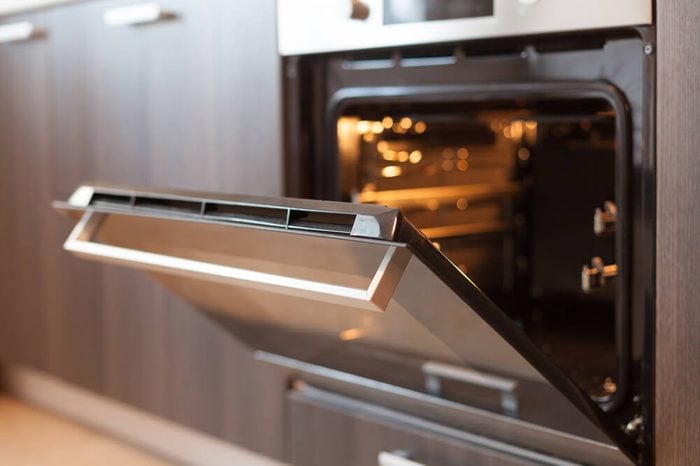
Oven and drain cleaners
Many oven and drain cleaners contain sodium hydroxide (also known as lye), a corrosive substance that can cause severe burns if it comes in contact with your skin or eyes. “Oven cleaners are sprayed, which means you can end up breathing it into your lungs,” says Rick Sachleben, PhD, expert for the American Chemical Society. If inhaled, sodium hydroxide can cause a sore throat that can last for several days. Drain cleaners also contain sodium dioxide and can be hazardous—that’s why they come with instructions and warnings, he says. When cleaning with these toxic substances it is important to always wear gloves, and make sure the area is well ventilated, says Becky Turpin, director of Home and Community Safety at the National Safety Council. “Turn on a fan if you have one, and open windows,” she advises, and “wear a mask that covers your mouth and nose.”
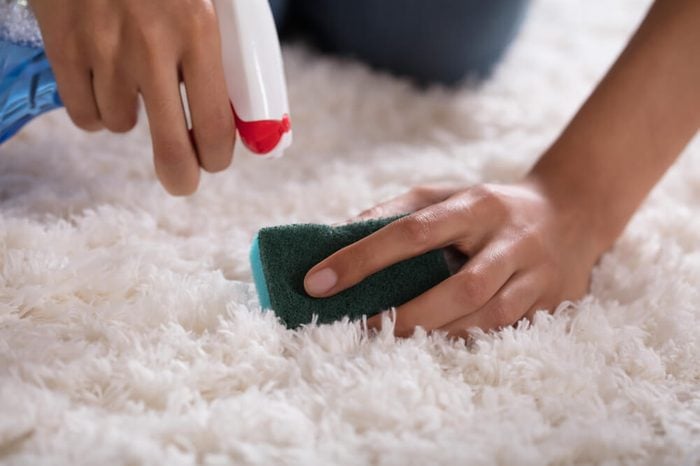
Multipurpose cleaners
Multipurpose cleaners promise to make life easier by being able to clean a variety surfaces but many contain the harmful chemical 2-Butoxyethanol, a glycol ether that, according to the Environmental Working Group may cause a variety of ailments from skin irritation and sore throats (when inhaled) to more serious conditions such as liver and kidney damage. “Depending on the type of cleaner, these products may contain ammonia, perchloroethylene (“PERC”), 2-butoxyethanol, or sodium hydroxide,” says Turpin. “All of these chemicals can have negative side effects if ingested or inhaled, and the potential complications range from skin irritation to organ damage.”
(Psst: These vinegar cleaning hacks will save you time and money.)
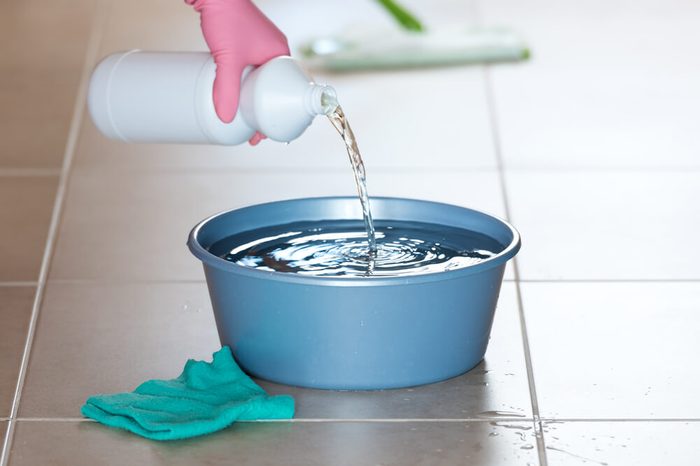
Bleach
When it comes to whitening and disinfecting, bleach is a go-to household staple, but bleach itself is also a dangerous substance that can cause skin irritation, respiratory problems, and even death. “Used properly, bleach is great for disinfecting, but it is usually one of the most hazardous chemicals in the household,” says Sachleben. “Put one drop of bleach in a gallon of water and you can drink it, but five percent bleach will burn your throat.” The biggest risk that involves bleach happens when it is mixed with ammonia. When mixed, bleach and ammonia react to form chloramine, which evaporates into the air, and can kill you if you breathe it in, explains Sachleben. Bleach also wreaks havoc on kitchen faucets and surfaces. “It contains chlorine, and when it reacts to disinfect, it becomes corrosive,” explains Sachleben. “If you use it around your house, the faucets will rust from the chlorine.”
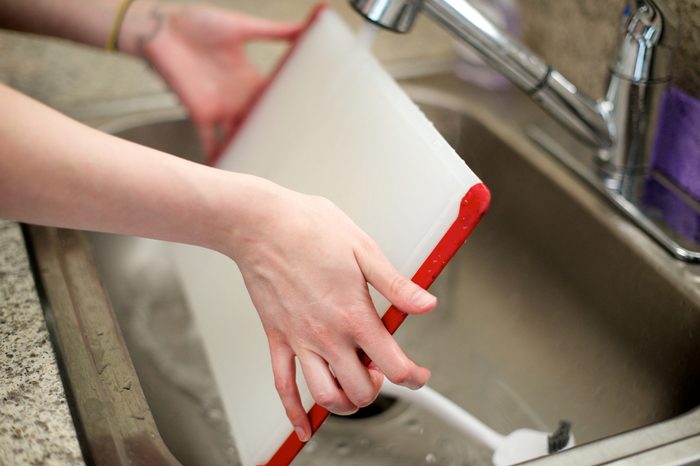
Plastic cutting boards
These are a kitchen staple, but when they become scarred and ragged from deep cutting with knives, they create a web of fissures that can harbour bacteria and lead to food poisoning. Worn plastic cutting boards are also likely to shed plastic particles that could end up in your food. “With plastic cutting boards, the risk of chemicals coming from the board is low, but the bacteria is always an issue,” says Sachleben. “You need to be able to get the trace of bacteria out of the crevices.” For more cutting board safety tips, check out the Canadian Institute of Food Safety’s guidelines.
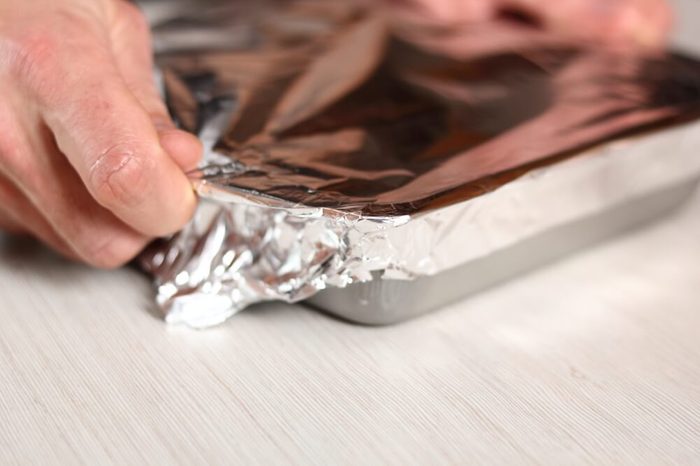
Aluminum foil
Aluminum foil has been around for more than 100 years and is an ideal product for wrapping and storing foods, but when aluminum leeches from foil or aluminum pans into our food, it can be potentially harmful. Sachleben cautions that risk for aluminum exposure increases when you cook acetic foods, such as tomatoes, in an aluminum pot. A study published in the International Journal of Electrochemical Science suggests that cooking at high temperatures with acidic foods did perpetuate a greater amount of leaching of aluminum. “Follow the rules,” says Sachleben. “Don’t cook acidic foods in aluminum or store orange juice in an aluminum container.” (FYI: These leftover foods will without a doubt make you sick.)
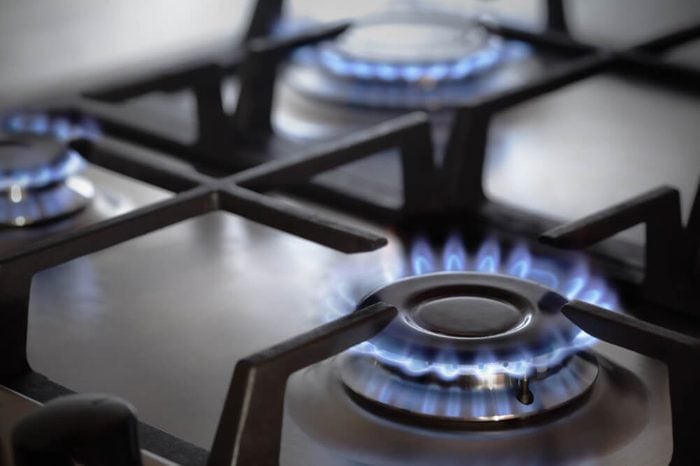
Gas stovetops
Many cooks prefer gas cooktops for their quick start, constant flame, and ability to cook food more evenly, but gas appliances, especially if not vented properly, can emit a mix of potentially hazardous chemicals and compounds—nitrogen dioxide, carbon monoxide, and formaldehyde—which can worsen various respiratory and other health ailments. These pollutants are usually less diluted within our homes than they are outdoors, and in the absence of ventilation, emissions from gas stove burners can reach potentially harmful levels, a 2014 study in journal Environmental Health Perspectives suggests. “Most gas stoves are not vented like your furnace,” says Sachleben, “but you also don’t use them as much, and most homes have carbon monoxide detectors.”
When it comes to the threat of formaldehyde, he says that you are more likely to find higher concentrations of the chemical in some of the foods you eat than from the gas flame on your stove. “But the concern is there,” he says. To ensure safe air quality levels, be sure to use a venting range hood, and never use a gas stove as a heat source.
(Love to cook on the grill? Don’t miss these grilling mistakes that could make you sick.)
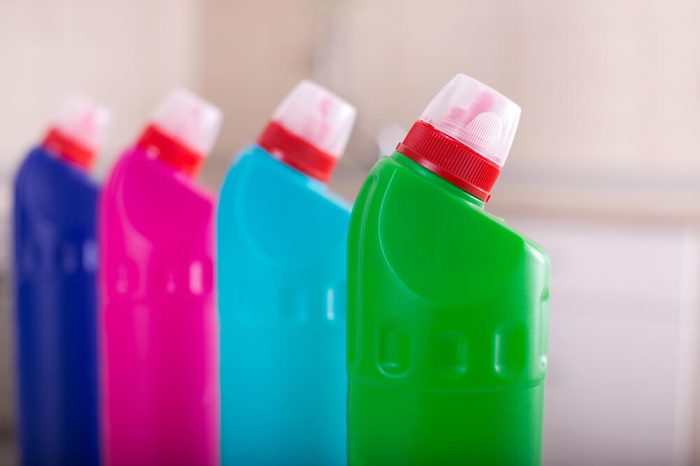
Ammonia
Available in full-strength and in a variety of household cleaning products, ammonia in liquid form is an excellent cleanser. However, despite it’s cleaning prowess, it can cause serious health problems if not used properly. According to the Occupational Safety and Health Administration (OSHA), ammonia is highly toxic and can severely corrode the lungs, eyes, and skin, causing blindness, lung problems, and death. Its pungent odour is highly recognizable, and irritating. “You have to be careful not to use ammonia in an enclosed space and breathe it in,” says Sachleben. “And never mix ammonia and bleach—it’s lethal.” (Here are more household items that are literally poisoning your air.)
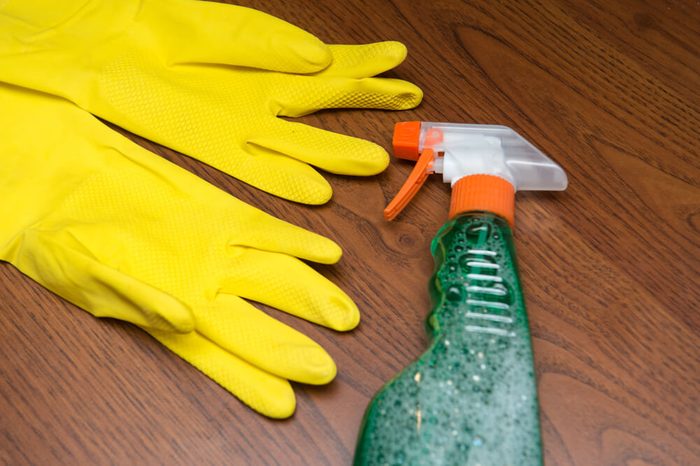
Natural cleaners
We know what’s in synthetic cleaners, says Sachleben, but the ingredients in some natural products have not been studied and we don’t know the long-term toxicity of the ingredients. While reputable natural cleaning companies such as Seventh Generation list the ingredients on their labels and work to exclude chemicals with known or suspected toxicities, other companies may claim to be green or natural but still sneak toxic substances in their products. Natural cleaners contain plant extracts and their minor components are not well identified, so you don’t know the risk, explains Sachleben.
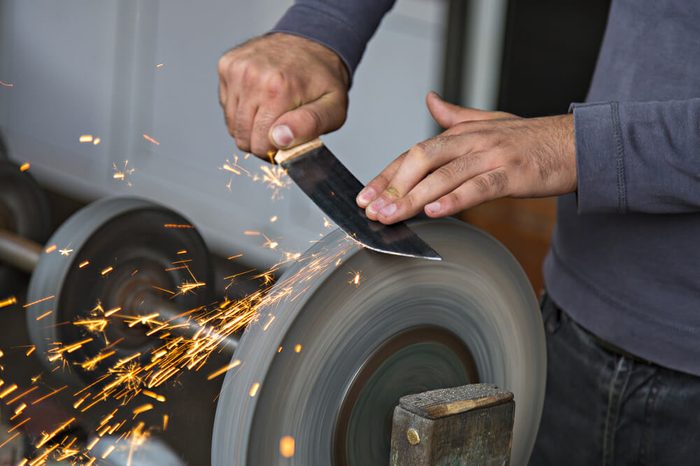
Dull knives
A sharp knife can be a chef’s best friend. But knives, especially if they are dull, are responsible for the greatest number of kitchen accidents, sending more than 1.1 million people to the emergency room each year. This common kitchen item falls on the side of dangerous more than toxic. While sharp knives pose obvious risks, keeping knives sharp actually leads to fewer injuries. Dull knife blades are more likely to slip because they require more pressure to cut. In addition to following proper safety rules, it’s important to have your dull knives resharpened, says Sachleben. “If you do send your knives out to be re-sharpened, be careful when you get them back.”
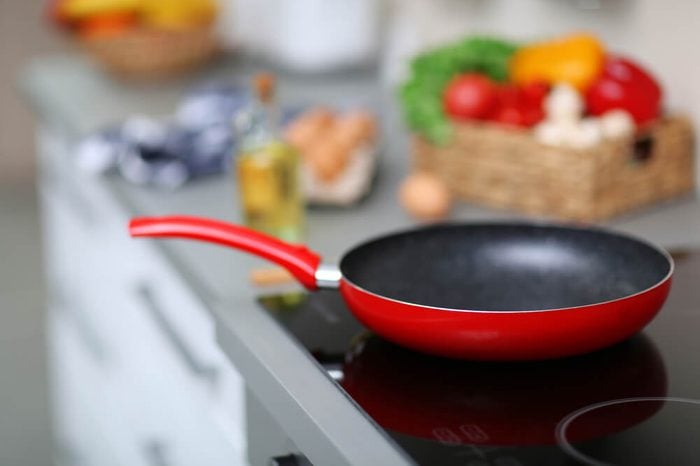
Non-stick cooking pans
Non-stick cooking pans make clean-up a breeze, but when their surfaces are heated to high temperatures or they become scratched and pieces of the coating flake off into your food, it can pose health risks. Non-stick pans are coated with polytetrafluoroethylene (PTFE), a chemical that has nonstick properties. When PTFE-coated pans are heated to high temperatures, they emit gases that can be toxic, according to a 2017 study in the journal Environmental Science and Pollution Research. To be safe, one should try to avoid overheating pans that are fluorinated, says Sachleben. It’s worth spending the money on a quality pan for cooking—you want to get something that will hold up over time. (Also, check out these other cooking mistakes that can make your food toxic.)
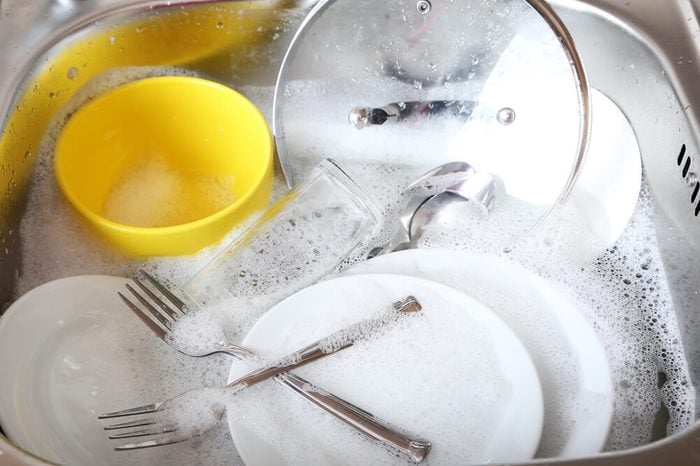
Dish soap
Phthalates, often called plasticizers, are found in everything from vinyl flooring, adhesives, raincoats to dish soap. According to the Centers for Disease Control and Prevention, the health effects from exposure to low levels of phthalates are unknown but in studies, some types of phthalates have been shown to affect the reproductive system of laboratory animals. “There is valid concern about phthalates and long-term exposure,” says Sachleben. While the risk may be low, especially when compared to other products, an existing risk is a good reason to be cautious and find substitutes. “There are other cleaners that allow the chemicals to be effective but with less risk,” he says. (Read up on the most germ-infested things you touch every single day.)
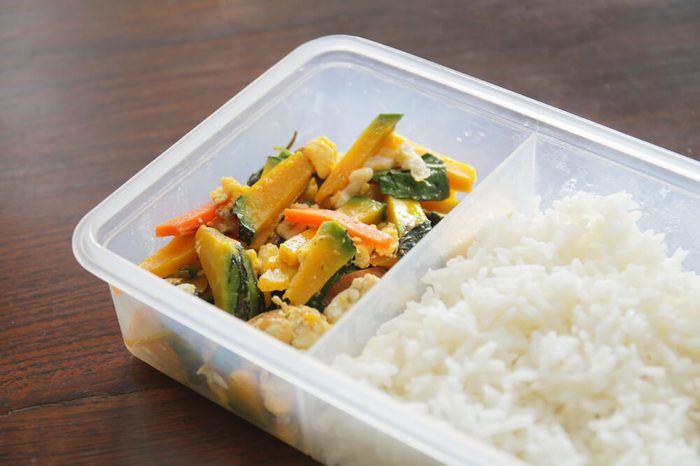
Plastic storage containers
Plastic containers and plastic wrap are common kitchen items used to store food but when placed in the microwave and heated, they have the potential to leak bisphenol-A (BPA) and phthalates into the food, especially if the food has a higher fat content, according to a 2018 study in Comprehensive Reviews in Food Science and Food Safety. These two chemicals are known to be endocrine disruptors, which means they have the ability to affect estrogen and testosterone levels in humans and even impact the development of the brain and reproductive organs in developing fetuses. Temperature and time are also key factors when it comes to heating food in plastic containers.
“Hot foods sitting in a container for longer periods of time, will leach more,” says Gary Ginsberg, PhD, author of What’s Toxic, What’s Not. “In general, it is advisable to heat your food in ceramic or Pyrex to avoid the leaching issues you get from plastic trays,” he advises. “When we know something is avoidable, it’s good to take action on it.”
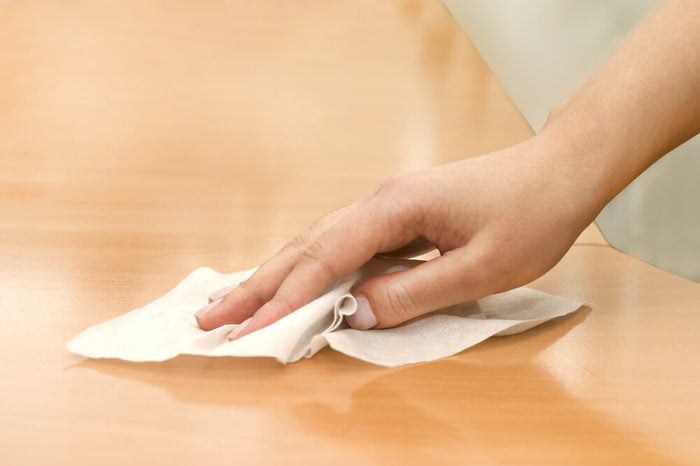
Antibacterial cleaners
Despite their claims for killing bacteria, the U.S. Food and Drug Administration, says there isn’t enough science to show that over-the-counter antibacterial soaps are more efficient at preventing illness than using soap and water. In addition, the long-term use of antibacterial cleaning products, which contain triclosan and triclocarban, may have negative health effects and could make some bacteria resistant to antibiotics, according to a 2015 study published in the journal Chemosphere. Quarternary Ammonium Compounds, another type of antimicrobial often found in antibacterial cleaners, not only have been shown to breed antibiotic-resistant bacteria but they can also cause dermatitis, a separate 2014 study published in the Polish journal Medycyna Pracy suggests. “It’s important for people to understand the hidden dangers lurking underneath the sink and recognize that children are not the only ones at risk,” says Turpin. “Adults need to protect themselves from harsh chemicals and vapours, too.”
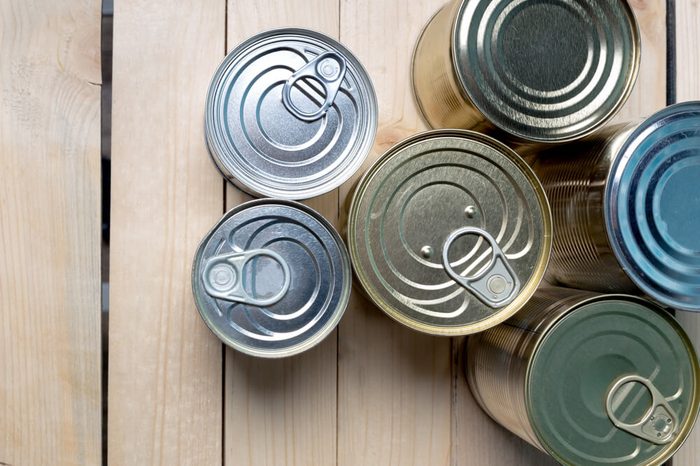
Canned foods
Canned foods are a convenient staple in many kitchen pantries, but their linings often contain BPA, a chemical that has been linked to reproductive toxicity. “It is hard to find canned foods that don’t have BPA,” says Ginsberg. Children’s foods are often advertised as having liners that are free of BPA, and parents should look for that and try to lessen the use of canned foods, he says. “It’s better to go with fresh or frozen food, but if the frozen food is in a plastic bag, don’t heat it in the microwave,” says Ginsberg.
(Psst: These canned foods nutritionists actually buy.)
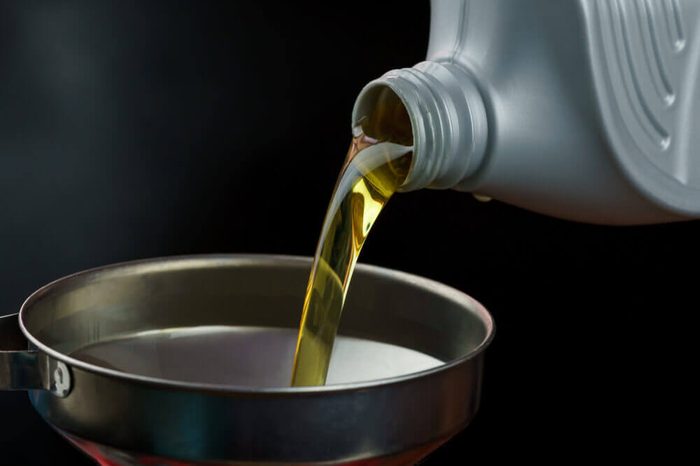
Gasoline
From removing grease to warding off ants, gasoline may have a variety of household uses, but remember, gasoline is made for cars, says Sachleben. “It is not designed to be a cleanser—it is too flammable and too dangerous—and should not be brought in the house.” Gasoline can contain benzene (and other aromatic hydrocarbons), which is known to be a human carcinogen, explains Sachleben. Exposure to gasoline, either through physical contact or inhalation, can cause several health problems and lead to gasoline poisoning. “If you need to clean something, go to the store and spend the money and buy the cleaner that is designed for what you need to do,” says Sachleben.
Now that you’re aware of the most toxic kitchen items in your home, next learn which household products are linked to breast cancer.
